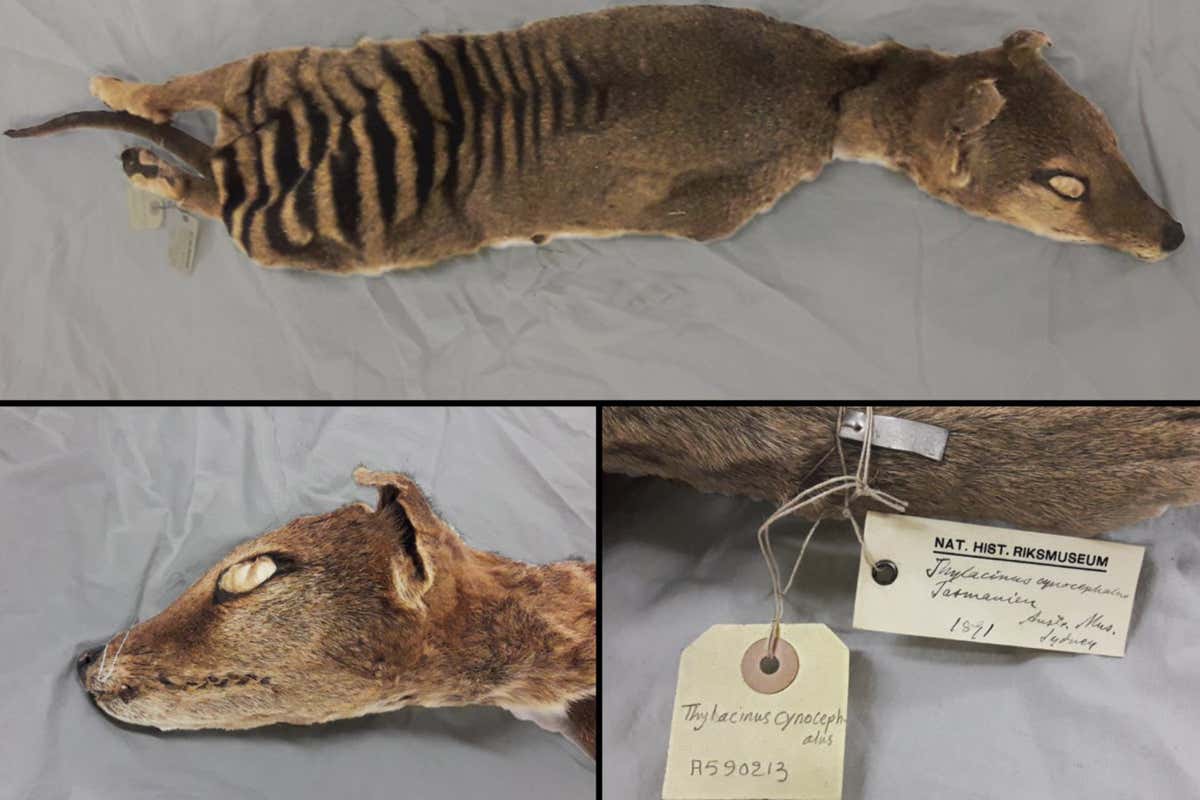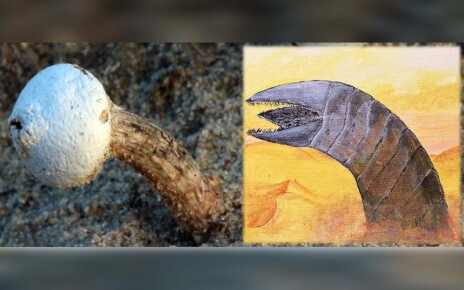[ad_1]

This thylacine has been in the Swedish Museum of Natural History’s collection for over a century
Emilio Mármol Sánchez /Panagiotis Kalogeropoulos
RNA taken from the desiccated remains of a thylacine, or Tasmanian tiger, could yield a new understanding of the species, which was declared extinct over 40 years ago. This is the first time RNA has been recovered from an extinct animal, and the technique may help our understanding of virus evolution and further controversial de-extinction efforts.
Thylacines were native to the Australian mainland and surrounding islands. While these creatures were named Tasmanian tigers by European colonists, they were actually marsupials, a group of mammals, such as kangaroos, that generally have a pouch. The last known thylacine died in a zoo in 1936 and the species was officially declared extinct in 1982.
Emilio Mármol Sánchez, then at Stockholm University in Sweden, and his colleagues extracted, sequenced and analyzed RNA from a thylacine that had been kept in the collection of the Swedish Museum of Natural History for 130 years.
Before now, RNA had only been taken from living organisms and a few ancient plants. While researchers had previously extracted DNA from thylacines, many experts considered recovering RNA to be too difficult, as the molecule is more fragile than DNA and they wouldn’t normally expect it to survive in something so old unless it had been frozen.
But RNA can also tell you more about an organism than DNA alone, says Mármol Sánchez. RNA “gives you the amount, the diversity and the effectiveness of the [DNA] within the biology of the cell”, he says, because it translates, applies and regulates the genetic material in each cell. For example, DNA provides instructions on how to build muscle cells, but RNA is responsible for developing them into different muscle tissues, such as the fast-acting muscles in our limbs versus the slow-acting ones in our backs.
Extracting the thylacine’s RNA allowed the researchers to identify gaps in the previously extracted genome, and understand how its cells used the genetic traits within its DNA, including RNAs related to slow-acting muscles. They even detected remnants of RNA viruses. “This is, in a sense, impossible to do just with DNA,” says Mármol Sánchez.
Demonstrating that RNA can be extracted from such an old animal opens the door for doing the same with other museum specimens, or ones preserved in permafrost. It could also impact de-extinction efforts, controversial attempts to recreate versions of extinct species using gene-editing tools and existing organisms as hosts.
“We had previously thought only DNA remained in old museum and ancient samples,” says Andrew Pask at the University of Melbourne, Australia, who is part of a team working to de-extinct the thylacine. “This can tell us about the function of genes in an extinct animal.”
Mármol Sánchez says that de-extinction isn’t the focus of his research, but people who want to bring species back to life will definitely need RNA to provide the full picture of how its cells actually worked.
As technology improves, “I expect we will see even more insights like this that can help us translate from genome sequence to the actual phenotype of an extinct animal”, says Beth Shapiro at University of California Santa Cruz.
Topics:
[ad_2]
Source link




